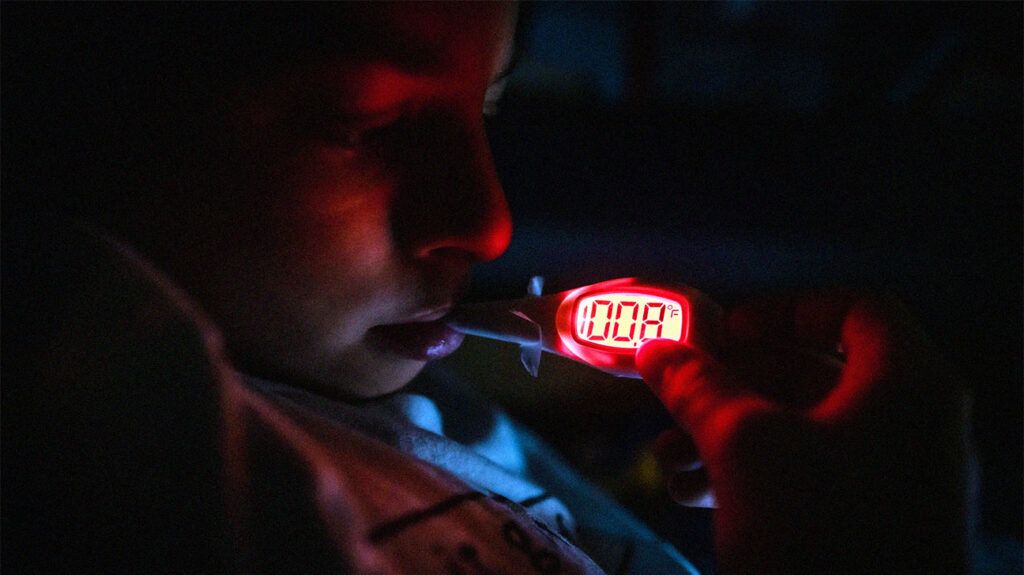Rheumatic fever and scarlet fever both occur due to a bacterial infection. However, they have some important differences to consider.
Rheumatic fever is a complication of under-managed bacterial infections. It can cause potentially deadly complications.
Scarlet fever can also occur due to a bacterial infection. It causes a rash and is generally mild. Left untreated, the underlying infection can cause rheumatic fever.
This article reviews what each condition is, their similarities and differences, treatment options, and more.

Rheumatic fever is an immune-mediated disease that occurs primarily as a complication of group A streptococcal infections. In particular, untreated or poorly managed scarlet fever, strep throat, or strep skin infections
The condition affects
Rheumatic fever can cause joint, heart, skin, or brain inflammation. If left untreated, it can lead to potentially fatal complications.
Anyone can develop rheumatic fever, but children between the
Common symptoms can include:
- arthritis, often in the ankles, elbows, knees, and wrists
- fever
- fatigue
- uncontrollable body movements (chorea)
- signs of congestive heart failure, such as a fast heartbeat, chest pain, and shortness of breath
Scarlet fever is a red or discolored rash due to an infection from group A Streptococcus. This is the bacteria that causes strep throat.
Scarlet fever is
- sore throat and pain when swallowing
- a fever (101°F or higher) or chills
- stomach pain
- nausea
- headaches
- body aches
- vomiting
A person may also notice changes in the appearance of different body parts, including their tongue, neck, throat, and skin.
A rash typically appears within 2 days of the other symptoms’ onset, but it can take up to a week to appear or may even appear before other symptoms start. The rash often starts in the neck, underarms, and groin and then spreads across the body.
Physical characteristics of the rash include:
- feels like sandpaper
- peeling skin as the rash fades
- a pale area around the mouth
- brighter red or discoloration more in skin creases
The condition is more common in children than adults. Strep throat is the underlying cause in
Left untreated or under-managed, it can lead to several complications, including rheumatic fever.
Scarlet fever
Scarlet fever can lead to rheumatic fever, but rheumatic fever does not cause scarlet fever.
Another difference is that scarlet fever is easily passed on to other people, but rheumatic fever is not contagious.
Both scarlet and rheumatic fever occur due to an infection from group A Streptococcus.
Both are also
Both rheumatic fever and scarlet fever require antibiotics
Rheumatic fever
Rheumatic fever treatment often involves three parts,
- destroying the bacteria with antibiotics, commonly penicillin
- treating symptoms, using medications for arthritis, anti-inflammatory medications, heart medications, or surgery
- regular treatment with antibiotics to prevent recurrence
Some people develop long-term heart damage, known as rheumatic heart disease. These people
Scarlet fever
Doctors treat scarlet fever with antibiotics.
A person should complete any antibiotic regimen as prescribed.
The following sections provide answers to frequently asked questions about rheumatic and scarlet fever.
What is scarlet fever called now?
Scarlet fever
What disease is mistaken for scarlet fever?
At times, scarlet fever may present atypically, or healthcare professionals may mistake symptoms for another underlying cause. Illnesses that people
How can you tell the difference between strep and scarlet fever?
Strep throat and scarlet fever occur due to the same bacteria. Both are associated with a painful sore throat and fever, but scarlet fever will present with a rash that often covers the body.
Scarlet fever can cause rheumatic fever if left untreated. Both occur due to the same bacteria that causes strep throat.
Rheumatic fever is generally more serious and affects several organs in the body, including the heart. Left untreated, it can lead to permanent heart damage and may be fatal.
Treatments for each involve antibiotics. People with rheumatic fever often require both prophylactic antibiotic treatment to prevent recurrence and treatment for any complications that may occur.
